I viewed this eclipse with my wife Sherry at our home in Wayside Maryland. The weather forecast was for partly cloudy skys with a chance of showers between 10 & 11 PM. The day turned out to be mostly cloudy and it did not look very promising for clearing by eclipse time. As the sun set clearing from the Northwest did overtake the area and the moon rose in a cloudless sky. Temperatures were in the upper 40's throughout the evening making it warmer than last years November eclipse. The sky remained clear all the way through the total phase and became partly cloudy 20 minutes after 3rd contact at around 12:10 AM.
Viewing through my telescopes and binoculars easily showed the moon's orange color where it had entered the earth's shadow while the remaining sunlit part remained visible as normal. I did not find it possible to obtain the proper photographic exposure to get both of these areas to turn out on the same picture however.
This was probably the best total lunar eclipse I have viewed considering the weather was good, not too cold and the wind was calm. Also the moon's color was a nice deep orange that was easily visible with the naked eye. The views right before and after totallity made the moon appear like a large orange planet with a very big polar cap. Many stars and the milky way were easily visible during the total phase giving the night sky a very unique look.
William E. Rison
Eclipse began at 9:14 PM EDT.
All pictures in this section were taken using my Vixen FL102S Fluorite APO refractor.
All pictures in this section were taken using my Vixen FL102S Fluorite APO refractor.
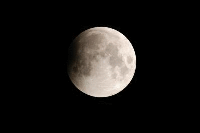
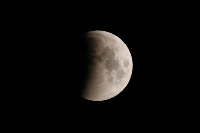
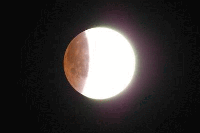
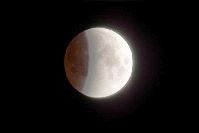
1/180 second
1/180 second
2 seconds
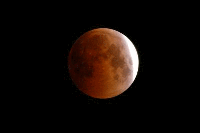
2 seconds
Totality began at 10:23 PM EDT and ended at 11:45 PM EDT.
Mid eclipse was at 11:04 PM EDT. Totality lasted for 1 hour 22
minutes.
All
pictures taken with Vixen FL102S except where noted.
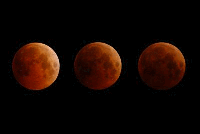
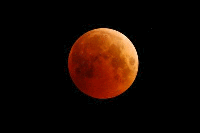

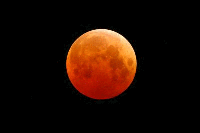
This sequence shows
how much the moon darkened as it moved further into the
earth's shadow.
10:32 10:45 10:57 PM EDT
2 seconds
10 seconds
11:06 PM EDT
10 seconds
11:09 PM EDT
20 seconds

11:09 PM EDT
4 seconds
Stellarvue
SV80S
Eclipse ended at 12:54 AM EDT 10/28/04. Stopped viewing at 12:15 AM because of clouds.
All pictures in this section
were
taken using my Stellarvue SV80S
APO refractor.
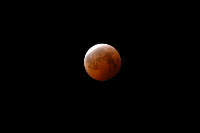
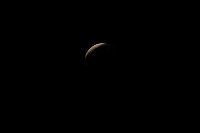
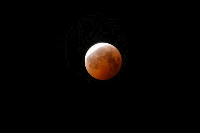
2 seconds
1/30 second
2 second
Photography
Data:
Vixen FL102S fluorite
APO refractor telescope, 920mm focal length, f/9
Stellarvue SV80S TMB Triplet APO refractor telescope, 480mm focal length, f/6
Nikon D100 digital camera, ISO 200, 6 megapixels
Ulead PhotoImpact 8 software
Stellarvue SV80S TMB Triplet APO refractor telescope, 480mm focal length, f/6
Nikon D100 digital camera, ISO 200, 6 megapixels
Ulead PhotoImpact 8 software
I used a Vixen FL102S fluorite refractor and Stellarvue SV80S TMB triplet refractor. The two telescopes were attached to a Celestron CGE mount in tandem. The observatory is from Sirius observatories of Australia.
Vixen FL102S (long telescope)
102mm (4") fluorite APO refractor
920mm focal length f/9
Stellarvue SV80S (short telescope)
80mm (3") TMB triplet APO refractor
480mm F.L. f/6
Celestron CGE GOTO equatorial mount
Sirius Home model observatory, 7 1/2 feet diameter
Charts showing where the eclipse was visible, timing of eclipse events and sky location of moon at mid-eclipse.
